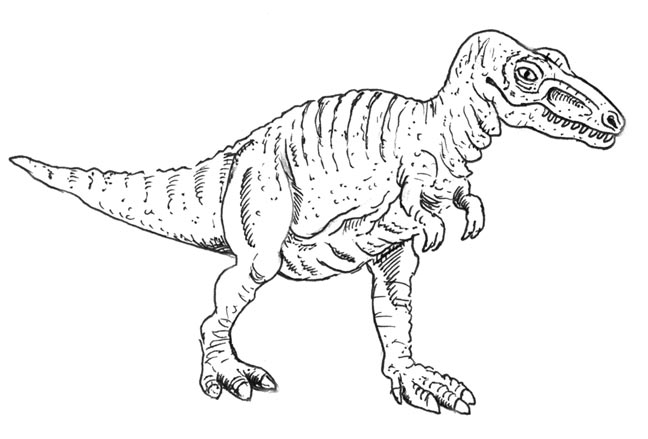Is Tarbosaurus really a T. rex?
Is the Asian Tarbosaurus really a Tyrannosaurus rex?
Whilst working with some school children on one of our dinosaur related lesson plans one of the Everything Dinosaur team members was asked about Tarbosaurus and whether this Late Cretaceous Tyrannosaur was really a Tyrannosaurus rex.
Tarbosaurus
This is certainly an interesting question and one that continues to cause debate, after all, when the eminent Russian palaeontologist Evgeny Maleev formerly named and described this dinosaur in 1955, the name he chose was Tyrannosaurus bataar. It was only after the original holotype material was reviewed and related to skull material from other tyrannosaurids found in Mongolia and China did the genus name get revised to Tarbosaurus.
A Drawing of Tarbosaurus (T. bataar)

A drawing of the Late Cretaceous Asian tyrannosaurid Tarbosaurus. Picture credit: Everything Dinosaur.
Picture credit: Everything Dinosaur
The difficulties arose because the joint Mongolian and Soviet expeditions to explore the Nemegt Formation of the Gobi desert which took place in the late 1940s and 1950s discovered several large theropod skeletons, including some skull material. A number of genera were subsequently named and described, including Tarbosaurus. In the revision of the work, which took place in the 1960s skull material from what was thought to represent smaller tyrannosaurids was ascribed to the genus Tyrannosaurus bataar as they were now considered to represent juvenile and immature species of this genus. The skull morphologies and dentition of these skull fossils were considered as a single body of fossil evidence was enough for the Tarbosaurus genus to be created. Tarbosaurus bataar remains the only valid genus and most palaeontologists think that although Tarbosaurus and Tyrannosaurus rex are closely related they are distinct genera.
Recent Studies
Ironically, more recent studies have shown that Tarbosaurus may possess more primitive tyrannosaur characteristics and may be more closely related to another Mongolian tyrannosaur Alioramus (A. remotus). If this is the case then this may well lend support to the hypothesis that large tyrannosaurids evolved in Asia and migrated into North America.
Surprisingly, scientists have quite a lot of fossil specimens of both Tarbosaurus and Tyrannosaurus rex to study (about thirty specimens of each). This is a remarkably high figure when one considers the limited amount of fossil material known from other large apex predators of the Suborder Theropoda. Tarbosaurus differed from T. rex in a number of ways, the skull was less deep and the snout narrower. The bone configuration of the skull designed to lesson the shock of biting was different in these two large meat-eaters. These points and other morphological differences have led most palaeontologists to conclude that these two animals do belong in different genera.
To view a model of Tyrannosaurus rex, Tarbosaurus and theropod dinosaurs in the CollectA model range: CollectA Age of Dinosaurs Prehistoric Life Models.

